Home | Tours | Trip Reports | News | Team | Calendar | Links | Contact | Store | Mailing List
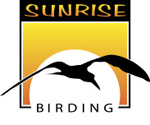
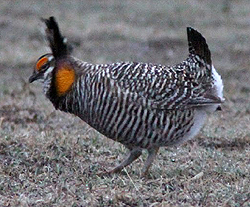 COLORADO CHICKENS
COLORADO CHICKENSTrip Report April 2010
TRIP REPORT (PDF)> SPECIES LIST (PDF)>
Leaders: Luke Tiller and Joe Bear
HIGHLIGHTS: 205 SPECIES RECORDED!
Including the “Magnificent Seven”:
Greater Sage-Grouse, Gunnison Sage-Grouse, White-tailed Ptarmigan, Dusky Grouse, Sharp-tailed Grouse, Greater Prairie-Chicken, Lesser Prairie-Chicken. Also Brown-capped Rosy-Finch, Lewis's Woodpecker; 2500+ miles!
Special thanks to our tour participants for these photos taken during the tour!
Above: Greater Prairie-chicken photo by Dominic Mitchell.
Day 1
We started our Colorado trip with a mid-morning arrival at Denver Airport and upon picking up the van were off on our way to adding over 2,500 miles to the clock. As we worked our way up into the Rocky Mountains we were greeted by soaring temperatures and crystal clear blue skies, great weather no doubt but not the kind that is particularly conducive to finding our main species of the day: rosy finches.
A brief stop at Allenspark was less productive than one might have hoped, with birds seemingly less preoccupied with the feeder setup than they might have been had the weather been slightly tougher. However it was not a washout here and we soon had a nice mix of high elevation species including all three Nuthatches: White-breasted, Red-breasted and Pygmy. It is interesting to note that the White-breasted Nuthatch of the Rocky Mountains, as well as differing subtly in plumage from Eastern and Pacific birds, also differ in their vocalizations and for that reason were recently included in Sibley’s blog-post on the most likely potential splits in North American bird species. Another nice find under the feeders was a Pine Grosbeak and a slew of different Junco subspecies, or groups as they might better be considered, in the shape of Gray-headed, Pink-sided and Oregon.
On the same date last year we had been hiking through three feet of snow but now even at elevation there was little around as we drove to our next destination: the home of artist and bird bander Scott Rashid. Scott was disappointed not to be able to provide us with our hoped-for rosy finches but he did take us on a tour of a few local sites. Before leaving his feeders though, we had Cassin’s Finch under our belts and then were on to bigger and better birds including one of the biggest of them all: a magnificent Golden Eagle, as it soared over Rocky Mountain National Park.
Scott soon had us onto some more raptors including a nesting Great Horned Owl and not one but two beautiful Northern Saw-whet Owls, including one stumbled-upon as we searched high and low for a Northern Pygmy Owl that had gone AWOL for the day. With sun setting over the mountains and a full day's worth of birds jammed into just a few afternoon hours we retired for a well earned pizza before wending our way down to Golden for a night in the home of Coors Beer.
Day 2
This day started bright and early as we struck out for a nearby park nestled in the peaks around Golden for a shot at the highly prized Williamson’s Sapsucker. After being led on something of a wild goose chase through the park by a number of calling individuals we eventually nailed great looks at both the male and female of the species. Although said wild goose chase was starting to eat into an already packed day, it wasn’t without its rewards as we picked up Red Crossbills, Pine Siskins and best of all, but unfortunately seen well only by Dominic and Ben, Evening Grosbeak.
Accompanying these birds was the usual mix of higher elevation species including resplendent Mountain and Western Bluebirds, Mountain Chickadee and the usual hodge-podge of Junco types.
After a great stop we were onto one of the most high-pressure moments of the tour; for the sometimes elusive White-tailed Ptarmigan. Although typically more numerous at Guanella Pass, seeing it there involves a snow-shoe bedecked 6 mile hike at 12,000 feet!!! We were left with the less strenuous Loveland Pass option.
Loveland Pass is hardly the birdiest of environs so there is little to distract you from the job in hand – a fearsomely tough hunt for a mainly white bird on a vast expanse of white background. The surrounding scenery is stunning, but soon starts to eat away at your sanity as you scan the endless whiteness for an out of place snow drift or speck of black which might be the bill or a freshly molted feather of a ptarmigan.
Having spent a good amount of time fruitlessly searching, and much of the group ready to pack the hunt in, Dominic pulled out the spot of the trip by picking up not one but two somewhat distant White-tailed Ptarmigan as they scuttled around a far outcropping. With a great deal of excitement, scopes were gathered and all garnered long-distance but rewarding looks at this tough bird.
With a short celebratory stop at the rather attractive town of Georgetown and a delicious sandwich at the Mountain Buzz Café, we were soon on the road again towards Walden, though not before adding a locally nesting American Dipper (which Sara managed to conjure up through some well-timed wishful thinking!) and the briefest of glimpses of a flyby Prairie Falcon to the ever-growing species list. En route we pulled over for our first waterfowl stop of the trip, at a drawn down reservoir situated amid the surrounding mountains.
The reservoir proved a great stop with a slew of good ducks including a wonderful mix of puddle and diving ducks with highlights including at least ten Barrow’s Goldeneyes, as well as Redheads, Canvasbacks and Common Mergansers. A deviation from the scheduled route to look for our missed rosy finches again came up empty but we did manage to pick up a few nice specialties including great views of a fairly accommodating roadside Gray Jay.
We pulled in to Walden and had just enough time to drop our bags and grab some dinner before a final birding trip of the day, a late night run out to Cameron Pass where we picked up a couple of different but somewhat distantly vocalizing Boreal Owls. Good enough to tick under ABA rules but not the hoped-for close encounters.
Day 3
The day started pre-dawn on a hunt for lekking Greater Sage Grouse, the sun rising above the mountains and surrounding sagebrush in a brilliant glow of pinks and oranges. Within minutes of arrival, we had already picked up a couple of birds in flight but they all seemed to be disappearing off onto the surrounding private land that we had been warned steadfastly by our local contact not to risk entering. Flight views were not really what we were after here; we needed good views of birds performing on the deck. No need to worry though as co-leader Joe Bear spotted a group of about 35 in a distant valley. With scope views had by all, we struck out again in the van to get closer to our quarry, and soon found ourselves watching from much closer and listening intently to the bubbling and popping of their incredible display.
From the sagebrush around us we also picked up our first Sage Thrashers of the trip as well as an active and very vocal Say’s Phoebe.
Post breakfast we headed out for Moose Visitors Centre. No Moose to be seen but a nice mix of birds at their feeders including a rather incongruous Wilson’s Snipe which broke cover from a nearby swamp and unexpectedly decided to land right under the feeders while we sat and prayed for Rosy-finches. The trip to Moose turned into something of a comic epic as we learned that some light snow was closing in on the area, and we hoped that this might bring with it a little mix of rosy finches. An initial dusting proved to be a somewhat uneventful although we did pick up a rather beautiful ‘Slate-colored’ Fox Sparrow. As the snow eased and our targets showing no signs of appearing, we set off on the road back to Walden.
Almost as soon as we hit the road however, the snow began to fall again and after a quick discussion we decided to pull a u-turn and make our way back to the center and try again. There was much to enjoy while we waited for rosy finches as Pine Grosbeaks, Pine Siskins, Steller’s Jays and Red-naped Sapsuckers kept us entertained at and around the feeders - but still no finches. As the second dusting of snow eased and still no sign of the rosies, we again set out on the road.
With less than a mile or two covered however, the snow began to fall again, and another van discussion and another u-turn saw us heading back towards the center. I think the rangers at the visitor’s center must have been very confused by our comings and goings that morning. This time though luck was finally on our side, and as if by magic a Brown-capped Rosy-Finch materialized at the feeders (the most localized of these limited-range birds).
After a while we started to pick up a couple of flocks moving overhead and a larger group of about twenty birds circled the visitors center but steadfastly refused to put down. Still the four or five of these stunning individuals that put on a show around the feeders certainly made for a well earned addition to the trip list. All the rosy finches are cracking birds - and ones that so easily could have evaded us this year if not for the willingness of everyone to risk our crazy schedule a little and try and create a little of our own luck. There was certainly some palpable relief in getting this species in less than ideal meteorological circumstances.
Unfortunately we were a little behind our ever-so-tight schedule and our time at Walden Reservoir was cut somewhat short. Not short enough however to stop us adding a nice mix of waterfowl and other species including American White Pelican, Franklin’s Gull and Cinnamon Teal as well as the rather bizarre sighting of a basic plumaged Sanderling which was nicely pulled out of the throng of birds by Barbara.
A few hours in the van saw us moving from snow encrusted mountains to gently rolling grassland hills for our final stop on another action-packed day. The pressure on again as we attempted to pick off another of the ‘tougher’ chickens on the tour: Dusky Grouse.
As we sat and scanned the surrounding oak scrub and sagebrush we continued to add to our growing trip list as Western Scrub Jays (another potential split into an interior species: Woodhouse’s Scrub Jay?), Spotted Towhees and Vesper Sparrows popped into view. As we scanned we picked up an unexpected and vocal little group of Sharp-tailed Grouse making their way through the valley floor and along the banks of a little stream. This small group of grouse multiplied in front of our eyes until we had eventually spotted at least 15 individuals, a bonus ‘chicken’ that we hoped to pick up at a different lek the following morning.
Back to the prize in hand though, and eventually we pulled out a performing Dusky Grouse from a nearby slope. A few of the group were on it immediately but as we had become slightly split up during our search, the rest of the group missed it while we ran to get them and the bird annoyingly sauntered behind cover. With ourselves and another group on the hunt for the bird again it was down to Trevor’s keen eyes (and a well-considered change of angle) that we all found ourselves back on this cracking bird.
With excellent views finally had by the whole group, we headed back to our hotel reassured that the difficult ‘chickens’ were now under our belt and looked forward to a good night’s sleep before another early start to look for the Sharp-tailed Grouse again; but this time in full performance mode.
Day 4
It seems redundant at this time to mention early starts or action-packed days, as every day followed the same pattern, however, once again, we were out before dawn to spot some high-stepping denizens of the plains.
We were not to be disappointed as a dozen Sharp-tailed Grouse put on their usual show, grunting and prancing and reminding everyone why the Plains Indians were alleged to have based many of their own dance moves on these strutting ‘chickens’. Even better, Annette spotted one of these birds putting on its own private show for us right behind the van, allowing us drop dead views of both male and female birds.
A quick stop on the way back to breakfast at another nice water feature replete with a Great Blue Heron rookery and loafing Bald Eagles also saw us picking up another nice mix of waterfowl and a few overhead swallows, before we were on to another designated stop on the trip to look for some more sagebrush specialties.
With Sage Thrasher under our belts already it was still nice to get good looks at this surprisingly short-billed member of the thrasher family, but our real quarry here was the attractive Sage Sparrow. With the day already heating up, vocalization seemed to have quieted down, but a little hike through the site’s sagebrush habitat soon had two or three of these fine slaty-helmeted birds popping up long enough to provide everyone with excellent views.
Much of the bulk of the rest of the day was now taken up with a long drive to position us for our adventures at Colorado National Monument the following morning. There was just time however, for an afternoon stop to look for a few interesting birds in one of the rocky canyons that branches off from the nearby Colorado River.
Our main target here was Chukar, an introduced Eurasian species. As is its reputation in areas that it is hunted, it is a difficult bird to find and, although we heard it well a few times, sightings were impossible to come by. Still there was a nice mix of birds to be found here including Black-throated and Brewer’s Sparrows as well as Bewick’s and Rock Wrens.
While we were exploring some foothills for the Chukar, Barbara and Jerry had been doing some exploring of their own and came back with the intriguing report of a possible Black-and-White Warbler. We decided to follow up on this unusual sighting and soon stumbled upon a nice mix of unexpectedly early pinyon juniper migrants – first in the shape of at least two eye-catching Black-throated Gray Warblers and then a rather less eye-catching but much more unexpected Gray Flycatcher. It seemed that the warmer than expected weather during our travels through the north of the state had reaped benefits in the form of early migrants as we made our way south.
A final couple of highlights of the stop worth mentioning were the band of beautiful Wild Horses that were nonchalantly moving through the valley around us and a particularly showy Mountain Bluebird that picked up bugs just yards from us as we hiked the roads.
Day 5
We started the day with a little drive around the housing developments that have risen up from the dusty, desert surroundings of Colorado National Monument. Here we picked up our first White-crowned Sparrows (of the Gambel’s subspecies) and also a few coveys of cheery Gambel’s Quails, including a couple of pretty vocal birds that were using the houses as perches from which to call. With a now-you-see-, now-you-don't Western Kingbird added to the ever-growing list and hinting at possible migrant action elsewhere, we were onward to the campgrounds within the park to see what else might be around.
With the stunning geological features of the park providing an incredibly scenic backdrop, we were soon picking up more vocalizing quail and a calling Chukar. As well as the local birds, migrant activity was also much in evidence. Among the more expected species we were soon onto a few new pinyon juniper birds for the trip including resident Juniper Titmouse and Bushtit as well as a nice mix of very recently arrived migrants, including more Black-throated Gray Warblers and Gray Flycatchers, as well as a rather unexpected Virginia’s Warbler,something of a rare treat.
The Virginia’s hung around just long enough to be chased from the scene by an angry Black-chinned Hummingbird and disappeared from view never to be seen again, despite some effort to relocate it. With the Park Rangers setting up for an event for local children in the campground, we decided to move on from this very productive area to try a couple more spots.
The scenery at Colorado National Monument is worth the visit all on its own, but the birding can also be fantastic. Another pull-off produced a slew of nice birds including a mixed flock of small passerines that contained our first Orange-crowned Warbler and a raucous and rapidly moving flock of exquisite Pinyon Jays.
As we traversed the route through the park we stopped to admire the rocky outcropping of the monument itself and picked up White-throated Swifts and a keen pair of eyes pulled out a soaring Peregrine Falcon out over the valley. A final stop at the Visitors’ Centre and we were then on our way down towards the Arkansas River Valley and Fruitgrowers Reservoir.
Before we could abandon the mountains we were still short on a couple of the higher elevation species for the trip. Now finding ourselves in something of a last chance saloon with American Three-toed Woodpecker itinerary-wise, we were pleased to pick up great views of this bird as we winged our way across our last mountain overpass for the trip as we traversed the stunning Grand Mesa. Additional views of Clark’s Nutcracker were also much appreciated as we left the mountains behind us, a somewhat bittersweet moment as we had all revelled in the natural beauty of this incredible range.
We arrived at Fruitgrowers Reservoir in the afternoon and without even trying had stumbled on our first target species of the stop (Lewis’s Woodpecker) as they worked the larger trees in the neighborhoods surrounding the reservoir. These stunning and much sought after woodpeckers gave us repeated good looks before we decided to finally head onwards to the reservoir.
The reservoir has to be one of my favorite stops of the trip and it proved a hit with other participants as well. The mix of species here can be excellent and we were soon into some exciting birds including a healthy number of lingering Sandhill Cranes, a nice mix of shorebirds including a small group of Marbled Godwits and a couple of less-expected 'Western' Willets (another likely split), which had even drawn a couple of the local twitchers.
From the marshy edges of the lake we picked up ‘Western’ Marsh Wren (yet another candidate for a split) and a variety of Grebes that included Eared, Clark’s and Western. The Westerns were very accommodating, allowing good close views and also putting on some of their synchronized water dance show for us.
In the realms of the less expected species we also picked up a single Hooded Merganser and a few Red-breasted Mergansers out on the shallow reservoir. A Forster’s Tern coursed over the waterway allowing for decent views, and to top off the whole experience an American Bittern flushed right from the roadside edge as we made our way back to the waiting van – simply incredible!
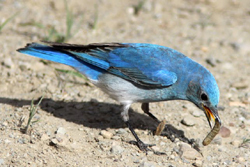
Mountain Bluebird © Dominic Mitchell
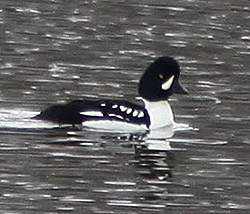
Barrow's Goldeneye © Dominic Mitchell
Saw-whet Owl © A. Cunniffe
Pine Grosbeak © A. Cunniffe
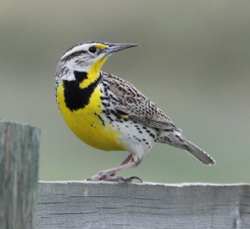
Western Meadowlark © A. Cunniffe
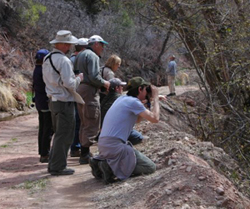
Birders © B. Munden
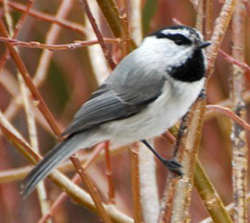
Mountain Chickadee
© B. Munden
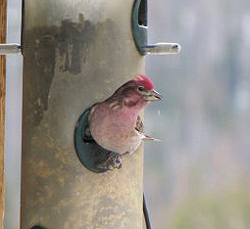
Cassin's Finch © D. Jernigan
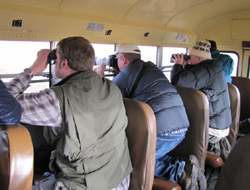
Chicken watching © D. Jernigan
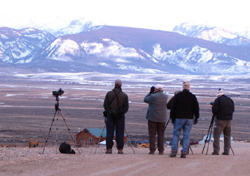
© D. Jernigan
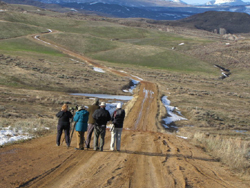
© D. Jernigan
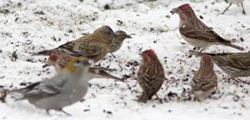
Brown-capped Rosy Finch & others
© Dominic Mitchell
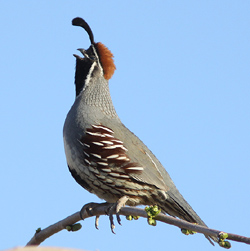
Gambel's Quail © Dominic Mitchell
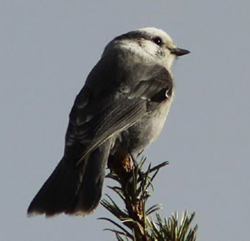
Gray Jay © Dominic Mitchell
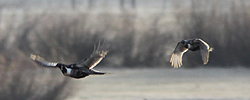
Gunnison Sage-Grouse © Dominic Mitchell
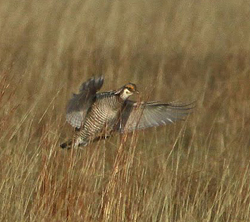
Lesser Prairie-chicken © Dominic Mitchell
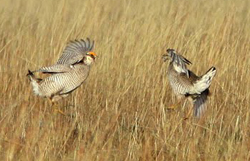
Lesser Prairie-chickens © Dominic Mitchell
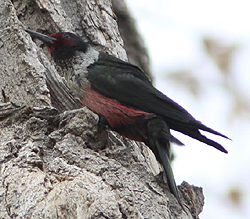
Lewis's Woodpecker © Dominic Mitchell
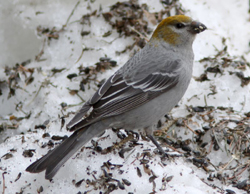
Pine Grosbeak © Dominic Mitchell
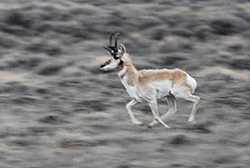
Proghorn © Dominic Mitchell
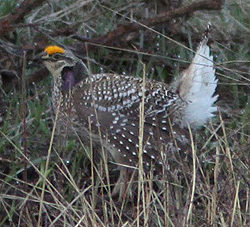
Sharp-tailed Grouse © Dominic Mitchell
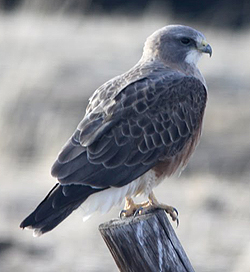
Swainson's Hawk © Dominic Mitchell
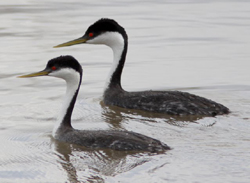
Western Grebe © Dominic Mitchell
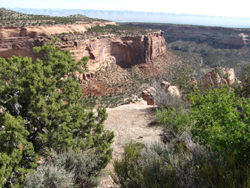
Colorado National Monument © D. Jernigan
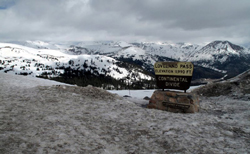
Loveland Pass © Dominic Mitchell
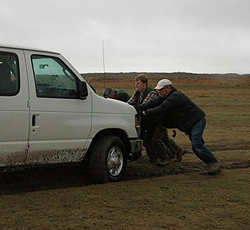
Van vs. Mud © B. Munden
Scroll down for group photo.
We finished our day with a couple more good views of another Lewis’s Woodpecker, a quick unplanned stop to scoop up Black Phoebe and a half dozen species of swallows, and rounded it all off with a fine dining experience at the Camp Robber restaurant (including the worlds best salad dressing!!!! As designated by Denise) in Montrose before winging our way to Gunnison for a morning appointment with their Sage Grouse.
Day 6
Our earliest morning yet as we all struck out for the one and only Gunnison’s Sage Grouse lek open for public viewing in the whole of the state of Colorado. The Gunnison’s are notorious for providing both distant views and disappearing at the merest crack of dawn light, however this year was a little different with the birds putting on a more than decent show even after the sun came up, before granting us excellent flight views as they flew over the viewing area.
One bird even flew in below the viewing site and lingered for the group for what eventually felt like a little too long as we awaited the all-clear to leave (the all-clear relies upon all the grouse having departed the lek for the morning). With the last bird finally departing, the lek we were swinging back to our hotel for a much needed breakfast.
Having pretty much outdone ourselves on the pinyon juniper species on previous days, we spent the majority of the early part of the day stopping to try pick up some migrant birds. Some stops were more successful than others but we soon racked up a neat little list including better views of Brewer’s Sparrow, our first Audubon and Myrtle Warblers (bound for re-splitting), Black Phoebe and a couple more American Dippers.
The second part of the day saw us hitting a couple of desert scrub areas and some more migrant spots in and around Pueblo for some of the more southerly and easterly breeding bird species. A whizz around some local developments picked us up more firsts for the trip including a rather nice Canyon Towhee or two, at least three Curve-billed Thrashers and a number of very accommodating Scaled Quails all loitering in the yards and open spaces surrounding this desert community.
A stop at some gravel pits saw us adding grebe species number five to our trip tally: a rather attractive and cooperative Horned Grebe in alternate plumage. We also managed to add jay species number five as we stumbled upon a cracking Blue Jay in a local neighborhood; something of a rare treat for the Californians in the group and a reminder of the general relativity of what birders consider ‘rare’!
We rounded our day off in the local town park where we eked out all-too-brief views of a couple of Lesser Goldfinch in with a roving flock of American Goldfinch and Ben snapped some rather amusing pictures of the somewhat dodgy looking Wood Ducks that were wandering the park lawns. Our evening ended with a fun Mexican meal and obligatory Margaritas at the restaurant that President Obama had stopped in at while canvassing for votes in Pueblo.
Day 7
This day's plan saw us starting out with a trip out to some likely-looking spots for shorebirds and waterfowl. However, with the waterfowl somewhat cleaned up already on the trip, the waders (as our British contingent might have preferred to call them) were our main quarry for the morning.
We were not to be disappointed and soon were racking up a dazzling variety of shorebirds, including a number of the continent’s most exotic looking ones: Black-necked Stilt, American Avocet and Wilson’s Phalarope. Another highly prized trip bird was also under our belts after we picked out an excellent number of Snowy Plovers (a dozen or so), and a careful analysis of the mix of peeps and other small shorebirds saw us adding Spotted, Semipalmated, Western, Least and Baird’s Sandpipers to our checklist. We were having less joy with knocked-down land bird migrants but the ever-changing mix of shorebirds was more than making up for it and a surprise Snowy Egret was a nice addition to the list.
The afternoon saw time devoted to grassland, desert and eastern bird species, however all were somewhat thin on the ground. Some hard work finally garnered a little reward and a variety of nice birds including two ‘Larks - Bunting and Sparrow, as well as Lincoln’s and Rufous-capped Sparrow. On the eastern front we added Eastern Phoebe and a late day Brown Thrasher.
Another new addition to the trip list, were a couple of stunning Ferruginous Hawks. Ferruginous Hawks are certainly up there on the list of ‘most wanted’ raptors in North America; these distinctive and impressively large buteos are always a treat to see and a welcome change from the equally attractive but somewhat ubiquitous Swainson’s Hawks.
Day 8
Another record early start as we made our way eastward towards the Kansas border for a date with Lesser Prairie Chicken. A date we might well have not made had it not been for some skilful driving, a “never say die” attitude and a sheer desire to get to see the birds (which made us reflect on counting ones ‘chickens’… as perhaps we had done after getting the Dusky Grouse ).
It was an inauspicious start as we met our morning’s guide who was to take us to a private lek. The weather had been wet for the past few days in the area and the clay roads had turned into something akin to a World War I battlefield, and our two vehicles were definitely struggling to make it through the mire. As we turned onto the final road to be traversed before the lek we started to wonder if we could even make it out to the site at all?
After a quick vehicle transfer into our trusty rolling hide (a school bus) we were slowly inching our way towards the lekking field, but still our troubles were not over for the morning. As we drove through the field a thick blanket of fog had begun to descend upon us making the placement markers for the lek almost impossible to see. With dawn breaking (as much as it could through the pea-soup fog) we spotted the telltale tree (or shrub) that put us back on course and we parked up to await our appointment with the lek.
Still, the fog was shrouding the fields in a mournful gray and, while we awaited our ‘chickens’, a rather humorously lost Yellow-headed Blackbird flew in right next to us, as if it had been attracted by the bright yellow of the bus (an almost exact match for its own beautifully colored head).
As the sun rose we realized that we were still slightly out of position and, although we could hear the sound of their haunting voices, a low ridge separated us from the displaying chickens. Another bit of skilful and, more importantly, stealthy driving was required before we rolled up the ridge just far enough to enable fine views of the display without encroaching on the performance of these fantastic birds.
Post lek we headed back for a hearty chuck wagon breakfast on the ranch of our morning’s guides replete with nesting Great Horned Owls in the back yard. From there we then backtracked from the edge of Kansas to check out a couple of interesting migrant spots in Lamar, and we were not to be disappointed by our decision to do so.
At Lamar we soon picked up a couple of the regular eastern specialties: Northern Mockingbird and Northern Cardinal as well as a mix of common western and eastern migrants including a rather nice Indigo Bunting and another Western Kingbird.
The show here might have been stolen altogether though by the active Red Fox den that we stumbled upon (along with four rather cute playful kits) had it not been for the appearance of a cracking Harris’s Sparrow. A fantastic trip bird and a lifer for many involved.
The rest of the day saw us outrunning some rather unpleasant looking tornado watches as we winged our way north, not that there wasn’t time en route to get stop to get a Chihuahuan Raven or two, a few Loggerhead Shrikes and a couple of flyover Long-billed Curlews. That evening we spent an entertaining time in the company of Bob Bledsoe before heading for a steak dinner in Wray.
Day 9
Day nine was our penultimate day of the tour, and our last full one with Birdwatch Magazine editor, Dominic Mitchell. We still had a couple of big target species to get under our belts and again we were up before the crack of dawn for our last chicken of the tour, Greater Sage Grouse.
We started off pre-sunrise at our Greater Prairie Chicken lek. The 27 birds put on a fine show as they danced and boomed just a handful of yards from the van before a rain shower or two ruined the lighting for photography and eventually dampened down the act.
The 'chickens' weren't the only draw here as a Burrowing Owl or two seemed to be suffering somewhat agitatedly through the performance, as the ‘chickens’ lekked around their burrows. After some assistance from one of the ranchers getting out of the muddy lek we also picked up a rather attractive Merlin that was dashing along the fence line.
We decided to backtrack slightly on our route to make sure we hit one of the state’s finest migrant hotspots. An oasis of water, trees and scrub in a rather featureless landscape always holds the promise of interesting birds so we ventured into the first copse of woods with a sense of impending excitement.
Although our first foray around the site had turned up little more than a Great Egret,Black-capped Chickadee and House Wren we were soon to be thankful that we had decided to make the stop. An impressively large flock of Sandhill Cranes flew overhead and we started to pick up some less expected migrants in among the ever-present flocks of White-crowned Sparrows.
First up we pulled out a small group of Field Sparrows (including both the pusilla and arenacea subspecies), and with activity growing we soon had a nice mix of birds. In amongst the expected 'eastern' species such as Chipping Sparrow, Eastern Bluebird and Red-bellied Woodpecker we were soon locating some real goodies, including a skulky Orange-crowned Warbler, another Lincoln’s Sparrow and a group of ever-delightful Cedar Waxwings.
By far and away the highlight of the stop was a Clay-colored Sparrow which finally revealed itself for cracking close-up views. Not that we were quite done for the stop, a hunt through the cedar stands for some of the sites nocturnal denizens gave us brief views only of a dark mystery owl which flushed so quickly it had to remain unidentified but good views of Barn Owl, both perched and in flight.
With an incredibly productive stop under our belt we headed off towards the grasslands of the Pawnee for the afternoon to look for some of the grassland birds that were still evading us on the tour. Although we managed to pick up nice looks at Mountain Plover in a soggy agricultural field, with the weather somewhat closing in again and the roads all a little treacherous we eventually called it a day and made our way out toward the lovely city that is Fort Collins for a meal and a beer or three at the local microbrewery.
Day 10
Our last real day in the field and still a few birds that we needed to see, or get better looks at. We started early morning again on the Pawnee looking for Longspurs. Initially we weren’t having a whole heap of luck but as hopes dipped we stumbled on a huge migratory flock of them out in a large agricultural field. Unfortunately they really were way out in the meadow and using the extensive long grass as cover. For what felt like an age therefore, we only saw them as a swirling flock as about 400 birds rose and fell allowing for only brief and barely identifiable views.
By now Dominic had joined us in his hire car (on his way to the airport). As the longspur flocks swirled and circled northwards, we parked ourselves on a crossroads bisecting the fields and awaited our quarry. As the birds streamed past us providing mainly in-flight views, we managed to get close enough views to separate out the less common Chestnut-collared Longspurs from the majority McCown’s.
With his final lifer of the trip safely under his belt, Dominic was swiftly onwards toward the airport. The group waved him a fond farewell as his car pulled away in a cloud of dust before we climbed back into the van for the last few hours of birding adventures.
In the afternoon we trundled our way across the Pawnee on the search for better looks at some of the grassland specialties while studiously avoiding some of the more treacherous looking dirt roads. We were not to be disappointed in our mission. A stop to scan a recently formed rain puddle soon had the group bundling out of the van in order to finally get good scoped views of an American Pipit, a bird that had thus far only provided us with brief flight views.
Another bird that fell into the ‘better view’ desired category was our next scoop of the day, as we picked up a rather accommodating Prairie Falcon which perched up along the fence posts that lined the surrounding grasslands. Decent scoped views of more Mountain Plovers followed and finally more good views of McCown’s Longspur, this time perched on the dusty grassland roads. Highlight, though, was perhaps the Chestnut-collared Longspur that provided cracking close views, a stunning mix of chestnut, black and that lovely creamy yellow face – beautiful!
Our remaining targets all pretty much under our belts, we decided to head off for the hotel for a wash and brush up before our final meal. With dinner calling we decided to indulge ourselves in one little last birding stop (why not!) as we walked over to our nearby restaurant. Just behind the hotel were a group of thus far uninhabited industrial buildings. On a tip-off from the British participants (who had done the same thing on their first night) we wandered around them and went to scan the vast ocean of fields that make up the Denver Airport complex.
As per instructions, we soon found ourselves watching as two Short-eared Owls floated across the airport grasslands and occasionally stopped to harass the odd Red-tailed Hawk that was loafing around the site (including one beautiful almost all black Harlan’s).
As well as the Short-eareds we also discovered the other treat that Dominic had dug up ten days before, a Great Horned Owl. As we wandered the complex the Great Horned Owl flushed from the roof of an empty building out across a small canyon into the grasslands, and momentarily a second bird flushed up from the ground below a porched doorway. Our final moments’ birding found us looking at two owls as they perched in a tree across the small canyon, as the soft light of the last rays of sun alit upon them.
It was not to be the last birding surprise of the tour though. As we walked round the building past the porch the bird had flushed from, there on the ground was a nest with three large Great Horned Owl eggs, a great finale to a wonderful trip!
All in all a fabulous ten days, with an incredible amount of miles covered and an inconceivable number of birds seen. Thanks to everyone for making it such a great adventure; it was an incredibly enthusiastic, friendly and fun group of participants. This was a trip that was blessed with numerous great birds, lots of incredible scenery and many amusing and entertaining moments to reflect upon. Thanks finally to co-leader Joe Bear, without whose expert planning, incredible driving skills (even in reverse!!!) and birding talents; none of this would have been possible. I look forward to doing it all again next year.
Report by Luke Tiller
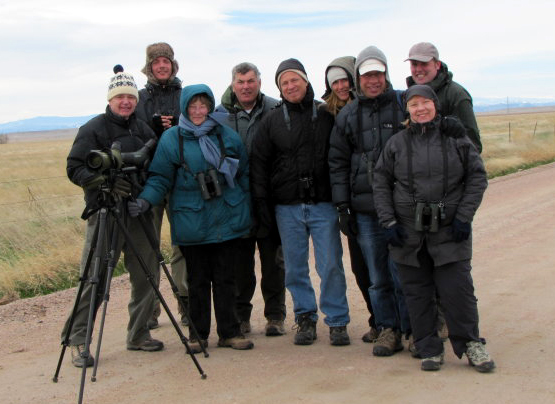
The Stalwart Group! © D. Jernigan